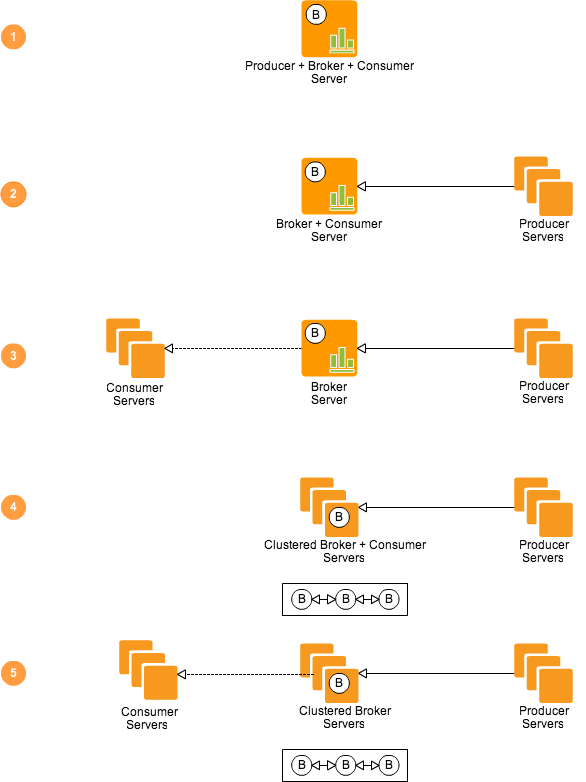#!/bin/bash
# File: /etc/init.d/obiee
# Purpose: Start and stop Oracle Business Intelligence 11g components.
# chkconfig: 2345 99 10
# description: Manage OBIEE service.
# These values must be adapted to your environment.
ORACLE_OWNR=obiee11g # Local Unix user running OBIEE
ORACLE_FMW=/opt/app/Middleware11g # Deployment root directory
BIEE_USER=weglogic # BIEE administrator name
BIEE_PASSWD=Admin@123 # BIEE administrator password
BIEE_DOMAIN=bifoundation_domain1 # Domain name
BIEE_INSTANCE=instance1 # Instance name
BIEE_SERVER=bi_server1 # Server name
BIEE_MANAGER_URL=192.168.168.27:7001 # Admin server URL (hostname:port)
# These should require no change.
WL_PATH=$ORACLE_FMW/wlserver_10.3/server/bin
BIEE_PATH=$ORACLE_FMW/user_projects/domains/$BIEE_DOMAIN/bin
ORACLE_INSTANCE=$ORACLE_FMW/instances/$BIEE_INSTANCE
export ORACLE_INSTANCE
START_LOG=/var/log/obiee-start.log
STOP_LOG=/var/log/obiee-stop.log
SUBSYS=obiee
start()
{
echo "********************************************************************************"
echo "Starting Admin Server on $(date)"
echo "********************************************************************************"
su $ORACLE_OWNR -c "$BIEE_PATH/startWebLogic.sh" &
wait_for "Server started in RUNNING mode"
echo "********************************************************************************"
echo "Starting Node Manager on $(date)"
echo "********************************************************************************"
su $ORACLE_OWNR -c "$WL_PATH/startNodeManager.sh" &
wait_for "socket listener started on port"
echo "********************************************************************************"
echo "Starting Managed Server $BIEE_SERVER on $(date)"
echo "********************************************************************************"
su $ORACLE_OWNR -c "$BIEE_PATH/startManagedWebLogic.sh $BIEE_SERVER http://$BIEE_MANAGER_URL" &
wait_for "Server started in RUNNING mode"
echo "********************************************************************************"
echo "Starting BI components on $(date)"
echo "********************************************************************************"
su $ORACLE_OWNR -c "$ORACLE_INSTANCE/bin/opmnctl startall"
echo "********************************************************************************"
echo "OBIEE start sequence completed on $(date)"
echo "********************************************************************************"
}
stop()
{
echo "********************************************************************************"
echo "Stopping BI components on $(date)"
echo "********************************************************************************"
su $ORACLE_OWNR -c "$ORACLE_INSTANCE/bin/opmnctl stopall"
echo "********************************************************************************"
echo "Stopping Managed Server $BIEE_SERVER on $(date)"
echo "********************************************************************************"
su $ORACLE_OWNR -c "$BIEE_PATH/stopManagedWebLogic.sh $BIEE_SERVER t3://$BIEE_MANAGER_URL $BIEE_USER $BIEE_PASSWD"
echo "********************************************************************************"
echo "Stopping Node Manager on $(date)"
echo "********************************************************************************"
pkill -TERM -u $ORACLE_OWNR -f "weblogic\\.NodeManager"
echo "********************************************************************************"
echo "Stopping Admin Server on $(date)"
echo "********************************************************************************"
su $ORACLE_OWNR -c "$BIEE_PATH/stopWebLogic.sh"
echo "********************************************************************************"
echo "OBIEE stop sequence completed on $(date)"
echo "********************************************************************************"
}
wait_for() {
res=0
while [[ ! $res -gt 0 ]]
do
res=$(tail -5 "$START_LOG" | fgrep -c "$1")
sleep 5
done
}
case "$1" in
start)
echo "********************************************************************************"
echo "Starting Oracle Business Intelligence on $(date)"
echo "Logs are sent to $START_LOG"
echo "********************************************************************************"
start &> $START_LOG &
touch /var/lock/subsys/$SUBSYS
;;
stop)
echo "********************************************************************************"
echo "Stopping Oracle Business Intelligence on $(date)"
echo "Logs are sent to $STOP_LOG"
echo "********************************************************************************"
stop &> $STOP_LOG
rm -f /var/lock/subsys/$SUBSYS
;;
status)
echo "********************************************************************************"
echo "Oracle BIEE components status...."
echo "********************************************************************************"
su $ORACLE_OWNR -c "$ORACLE_INSTANCE/bin/opmnctl status"
;;
restart)
$0 stop
$0 start
;;
*)
echo "Usage: $(basename $0) start|stop|restart|status"
exit 1
esac
exit 0



